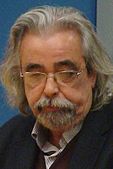Madrilenian regional election, 1995
|
|
|||||||||||||||||||||||||||||||||||||||||||||||||
|---|---|---|---|---|---|---|---|---|---|---|---|---|---|---|---|---|---|---|---|---|---|---|---|---|---|---|---|---|---|---|---|---|---|---|---|---|---|---|---|---|---|---|---|---|---|---|---|---|---|
|
|||||||||||||||||||||||||||||||||||||||||||||||||
|
All 103 seats in the Assembly of Madrid 52 seats needed for a majority |
|||||||||||||||||||||||||||||||||||||||||||||||||
| Opinion polls | |||||||||||||||||||||||||||||||||||||||||||||||||
| Registered | 4,129,852 |
||||||||||||||||||||||||||||||||||||||||||||||||
| Turnout | 2,907,141 (70.4%) |
||||||||||||||||||||||||||||||||||||||||||||||||
|
|||||||||||||||||||||||||||||||||||||||||||||||||
|
|||||||||||||||||||||||||||||||||||||||||||||||||
The 1995 Madrilenian regional election was held on Sunday, 28 May 1995, to elect the 4th Assembly of the Autonomous Community of Madrid. All 103 seats in the Assembly were up for election. The election was held simultaneously with regional elections in 12 other autonomous communities and local elections all throughout Spain.
The election resulted in the People's Party (PP) winning an absolute majority of votes and seats for the first time, which allowed Alberto Ruiz-Gallardón to become President and end 12 years of Spanish Socialist Workers' Party (PSOE) rule in the community. Joaquín Leguina's PSOE suffered from PM Felipe González' unpopularity at national level and fell below 30% for the first time in a regional election. The third party, United Left (IU), benefitted from the PSOE's decline and polled just over 16%, their highest vote share at a Madrid Assembly election to date.
The 103 members of the Assembly of Madrid were elected using the D'Hondt method and a closed list proportional representation, with a threshold of 5 per 100 of valid votes—which included blank ballots—being applied regionally. Parties not reaching the threshold were not taken into consideration for seat distribution. The Assembly was entitled to one member per each 50,000 inhabitants or fraction greater than 25,000, according to the updated data of the population census. Voting was on the basis of universal suffrage, with all nationals over eighteen, registered in the Community of Madrid and in full enjoyment of all political rights entitled to vote.
...
Wikipedia



